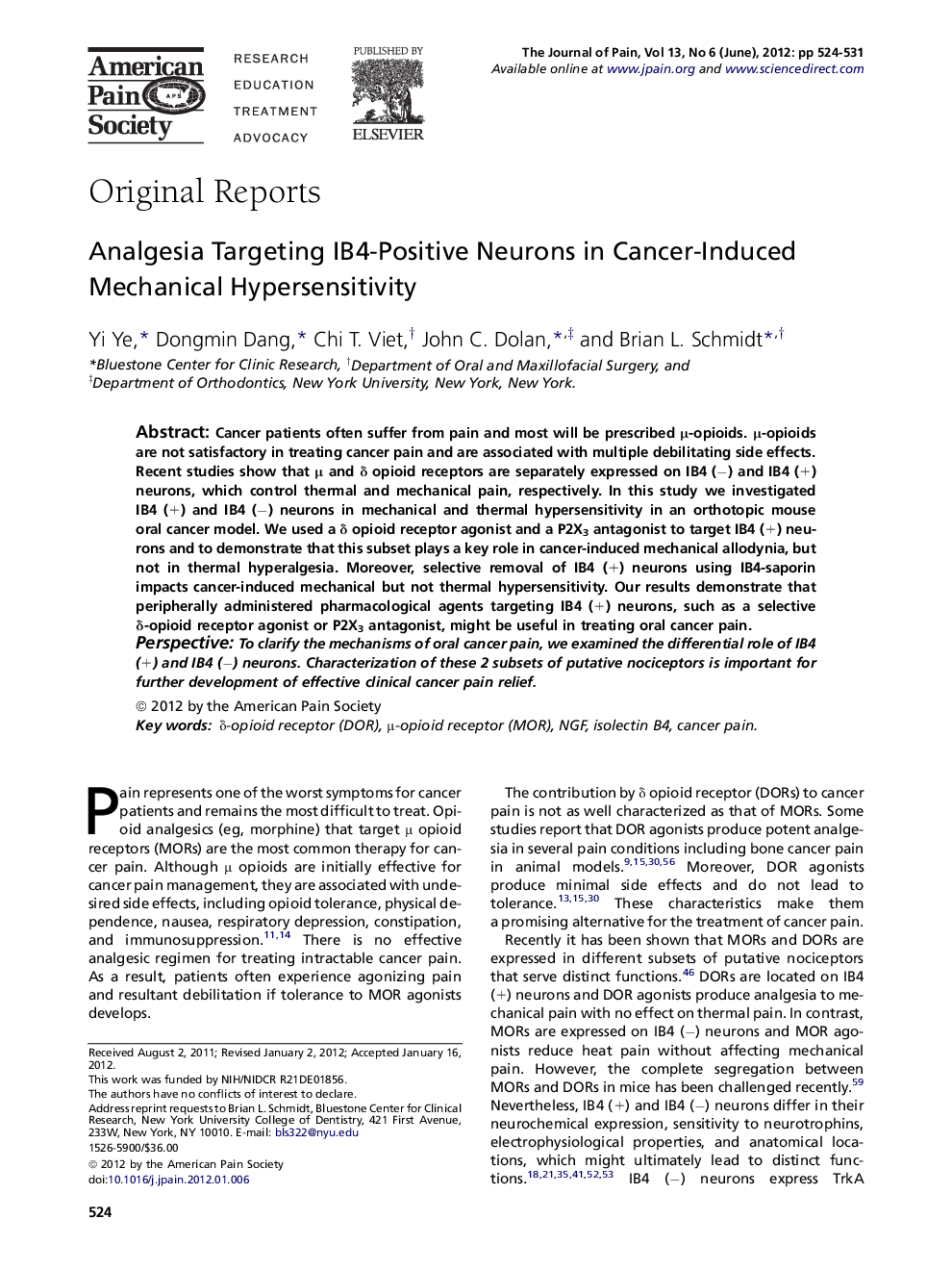| Article ID | Journal | Published Year | Pages | File Type |
|---|---|---|---|---|
| 2728850 | The Journal of Pain | 2012 | 8 Pages |
Cancer patients often suffer from pain and most will be prescribed μ-opioids. μ-opioids are not satisfactory in treating cancer pain and are associated with multiple debilitating side effects. Recent studies show that μ and δ opioid receptors are separately expressed on IB4 (−) and IB4 (+) neurons, which control thermal and mechanical pain, respectively. In this study we investigated IB4 (+) and IB4 (−) neurons in mechanical and thermal hypersensitivity in an orthotopic mouse oral cancer model. We used a δ opioid receptor agonist and a P2X3 antagonist to target IB4 (+) neurons and to demonstrate that this subset plays a key role in cancer-induced mechanical allodynia, but not in thermal hyperalgesia. Moreover, selective removal of IB4 (+) neurons using IB4-saporin impacts cancer-induced mechanical but not thermal hypersensitivity. Our results demonstrate that peripherally administered pharmacological agents targeting IB4 (+) neurons, such as a selective δ-opioid receptor agonist or P2X3 antagonist, might be useful in treating oral cancer pain.PerspectiveTo clarify the mechanisms of oral cancer pain, we examined the differential role of IB4 (+) and IB4 (−) neurons. Characterization of these 2 subsets of putative nociceptors is important for further development of effective clinical cancer pain relief.
